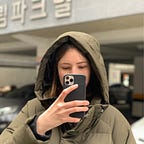01 | Micro UX: A trip outdoors
Design a set of interactions between plants and people that takes place at microclimate level.
Group members 🤝: Damul Yang, Moxue Jia, Giada Han and Maria Shuttleworth
<<< For my previous project on Macro UX, click here.
For this 7-week project we are going work with Chelsea Physic Garden (CPG), a 350 year old garden hidden by the Thames with its own unique microclimate.
Frances Sampayo, the Deputy Director of CPG and collaborator of this project, kindly introduced us to the topic. She explained that she wanted the project to help bring new audiences to the gardens as well as bring attention to the garden’s microclimate crisis.
We begun by deciding our groups, and then visited the garden the following Sunday.
Shortly after arriving we found ourselves enchanted by what seemed like a secret garden. It was full of a wide variety of plants, some of which we noticed had been kept rather unusually — many plants were kept inside plastic bubble-wrap, and others had their roots protected from rain by a plastic sheet.
After asking a gardener why this was, we were told that this is because these plants are native to warmer regions and need to have their climate maintained during the colder months.
While we were there we conducted 4 short interviews with two employees and visitors, so that we could begin to get a sense of the gardens reputation and inner workings.
From this we concluded that the rich collection of plants and the quiet environment was a unique attractive point for everyone. Additionally, it was interesting to learn that the visitors enjoyed learning about the garden during their visit, which we wanted to explore more.
Mindmapping.
We collaborated on a mind-map about the brief, our interests that stemmed away from it, and our findings from the garden visit. We were particularly interested in understanding the microclimate (Caine, 2021), Noosphere (Rispoli and Grinevald, 2018), and how plants communicate (Laskow, 2017) (Elhakeem, 2018).
Tutorial with John.
As the project was still in its early stages, we did not have a solid direction to discuss. Instead, we mentioned our current interest in plant communication and he suggested that we could get some inspiration from various types of photography (infrared, ultraviolet, x-ray film, cyanotypes, pinhole photography, suntrails…).
Meeting with Frances.
At this point in the project we found ourselves having more questions than answers, so we contacted Frances to ask for a follow-up meeting at her convenience.
I found it inspiring talking with Frances — she is so passionate about her work and the gardens history that we found ourselves chatting about its extensive seed exchange program (an important program started in the late 1800s when plant hunters went exploring to find and bring back new plants species to conserve and grow). We touched upon several other other topics too, such as their current audience, the microclimate, as well as their future aspirations with technology (a future that they would like to encourage, but would need to adapt as machines cannot typically pick up on the necessary subtleties in gardening).
Presentation feedback.
As our project so far largely consists of research, the class was not able to give us much critical feedback. However, while listening to the other CPG group and their mention of the gardeners ways of monitoring the health of plants, I found myself wondering about the sensors they use. This made me think about their limitations, and about how we can only see what we are looking for. This notion of framing and potentially missing the larger picture is something I would like to explore in the following week, as well as setting potential project directions through research and content analysis.
For the next project, 02 | Micro UX, click here. >>>
References.
- Caine, D., 2021. What Is a Microclimate? I Oxford Open Learning. [online] Oxford Home Schooling. Available at: <https://www.oxfordhomeschooling.co.uk/biology/what-is-a-microclimate/> [Accessed 26 April 2021].
- Laskow, S., 2017. The Hidden Memories of Plants. [online] Atlas Obscura. Available at: <https://www.atlasobscura.com/articles/plant-memory-hidden-vernalization> [Accessed 26 April 2021].
- Rispoli, G. and Grinevald, J., 2018. Vladimir Vernadsky and the Co-evolution of the Biosphere, the Noosphere, and the Technosphere. [online] Technosphere Magazine. Available at: https://technosphere-magazine.hkw.de/p/Vladimir-Vernadsky-and-the-Co-evolution-of-the-Biosphere-the-Noosphere-and-the-Technosphere-nuJGbW9KPxrREPxXxz95hr [Accessed 25 April 2021].
- Elhakeem, A., Markovic, D., Broberg, A., Anten, N. and Ninkovic, V., 2018. Aboveground mechanical stimuli affect belowground plant-plant communication. PLOS ONE, 13(5), p.e0195646.
